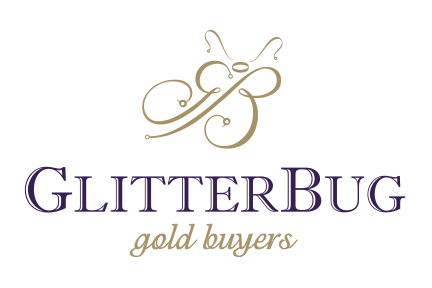How to Tell Real Gold from Fake — Orange County Seller’s Guide
Have you ever opened your jewelry box and wondered, “Is this piece real gold?” You’re not alone. Across Orange County — from Irvine to Laguna Beach, Mission Viejo, and Anaheim Hills — hundreds of people bring in jewelry, coins, and gold bars every week with the same question.
At Glitter Bug Gold Buyers, we specialize in accurate, science-backed gold testing using the Thermo Scientific Niton DXL Advanced XRF Gold Tester — the same professional-grade equipment trusted by refineries and government assay offices. This guide explains exactly how to identify real gold, what fakes look like, and why using advanced XRF testing ensures you get the highest and most honest payout for your items.
1. Why Identifying Real Gold Matters
Gold isn’t just another metal — it’s wealth that can be easily misrepresented. Fake or gold-plated jewelry often looks identical to real gold, but its actual value can be a fraction of what it appears to be.
Unfortunately, many sellers in Orange County have been underpaid simply because their items weren’t properly tested. Others have unknowingly bought gold-plated jewelry or filled items marketed as “solid gold.” Knowing how to tell the difference means protecting your money and your trust.
2. Understanding Karats and Markings
Pure gold (24K) is too soft for everyday wear, so most jewelry is mixed with other metals for strength. Here’s what the common karat markings mean:
Karat Purity Markings Common Use
24K 99.9% 999, 24K Coins, Bullion, Investment Bars
22K 91.6% 916, 22K High-End Jewelry (India, Middle East, Asia)
18K 75% 750, 18K Luxury Jewelry (Cartier, Rolex)
14K 58.5% 585, 14K U.S. Jewelry Standard
10K 41.7% 417, 10K Affordable Jewelry
3. Common Fake Gold Warning Signs
Counterfeit gold can be extremely convincing. Here are red flags we see in Orange County every week:
Unusual discoloration: Green or reddish tints near worn areas indicate plating.
Magnetic reaction: Real gold is not magnetic; if it sticks to a magnet, it’s likely fake or alloyed.
Flaking surface: Gold-plated items can show bubbling or peeling under magnification.
Mismatched weight: Real gold feels heavy for its size; fakes often feel lighter.
Incorrect markings: “GP,” “GF,” or “HGE” indicate gold-plated, gold-filled, or heavy gold electroplate — not solid gold.
Still unsure? That’s where professional testing makes all the difference.
4. The Science of XRF Gold Testing
At Glitter Bug Gold Buyers, we use the Thermo Scientific Niton DXL Advanced XRF Analyzer, the industry’s gold-standard (literally) for non-destructive testing.
How it works:
XRF (X-Ray Fluorescence) emits a low-energy beam into the metal surface. The gold atoms respond by emitting a unique fluorescent signature, which the device measures to determine precise metal composition — down to the thousandth of a percent.
✅ No acids
✅ No scratching or damage
✅ Instant, certified accuracy
This is the same equipment used by professional refiners and government labs, ensuring you get the most transparent and precise purity reading possible.
5. Other Testing Methods (and Their Limits)
While XRF is the gold standard, there are a few old-fashioned methods you can try at home — but they’re not always reliable:
Method Pros Cons
Magnet Test Quick and Simple Many alloys are also non-magnetic
Acid Test Works on Scrap Pieces Can damage jewelry or fade plating
Density Test Accurate for bars Hard to perform precisely on small items
Visual Inspection Easy Unreliable
If you want to be absolutely certain, bring your items to a certified gold testing expert who uses XRF. The difference in payout could be hundreds of dollars.
6. Real OC Example: The “Fake 18K” Necklace
A customer from Tustin brought in a thick gold chain stamped “18K.” It looked authentic and passed a magnet test — but our Thermo Scientific Niton DXL XRF revealed only 42% gold content (10K equivalent).
If that chain had been sold elsewhere without proper testing, the seller could have lost nearly $1,200. Instead, with accurate results, we gave them a fair payout based on real purity.
That’s the power of science-based verification and local expertise.
7. What You Should Do Before Selling
Inspect the item: Check for clear karat markings.
Clean gently: Dust or dirt can affect surface readings.
Bundle similar items: Selling together often improves your payout.
Research current gold spot price: Know today’s market value before you visit.
Request XRF testing: Always ask your buyer to show live purity readings.
At Glitter Bug Gold Buyers, we perform the test right in front of you — no secrets, no waiting.
8. Why Orange County Trusts Glitter Bug Gold Buyers
Thousands of OC residents rely on Glitter Bug because of our transparency, professionalism, and precision. We’re not a pawn shop — we’re specialists in precious metals analysis.
Advanced XRF Technology: Using the Thermo Scientific Niton DXL ensures accurate, non-invasive testing.
Live Spot Pricing: Payouts are calculated using current global gold rates.
Immediate Cash Offers: Walk in with gold, walk out with cash.
Local Expertise: Trusted by sellers from Laguna Hills, Irvine, Mission Viejo, Costa Mesa, Anaheim, and Huntington Beach.
When accuracy matters — and it always does when dealing with high-karat gold — you want results you can trust.
9. Conclusion: Knowledge = Higher Payout
Understanding how to tell real gold from fake is your best defense against underpayment and scams.
With modern XRF testing, you never have to guess.
If you want to know exactly what your gold is worth, visit Glitter Bug Gold Buyers in Laguna Hills — where technology meets trust, and every gram of real gold counts.
Bring your gold jewelry, coins, or bullion today for free XRF testing and same-day payment.
📞 (949) 461-9191 | 🌐 www.GlitterBugGold.com
